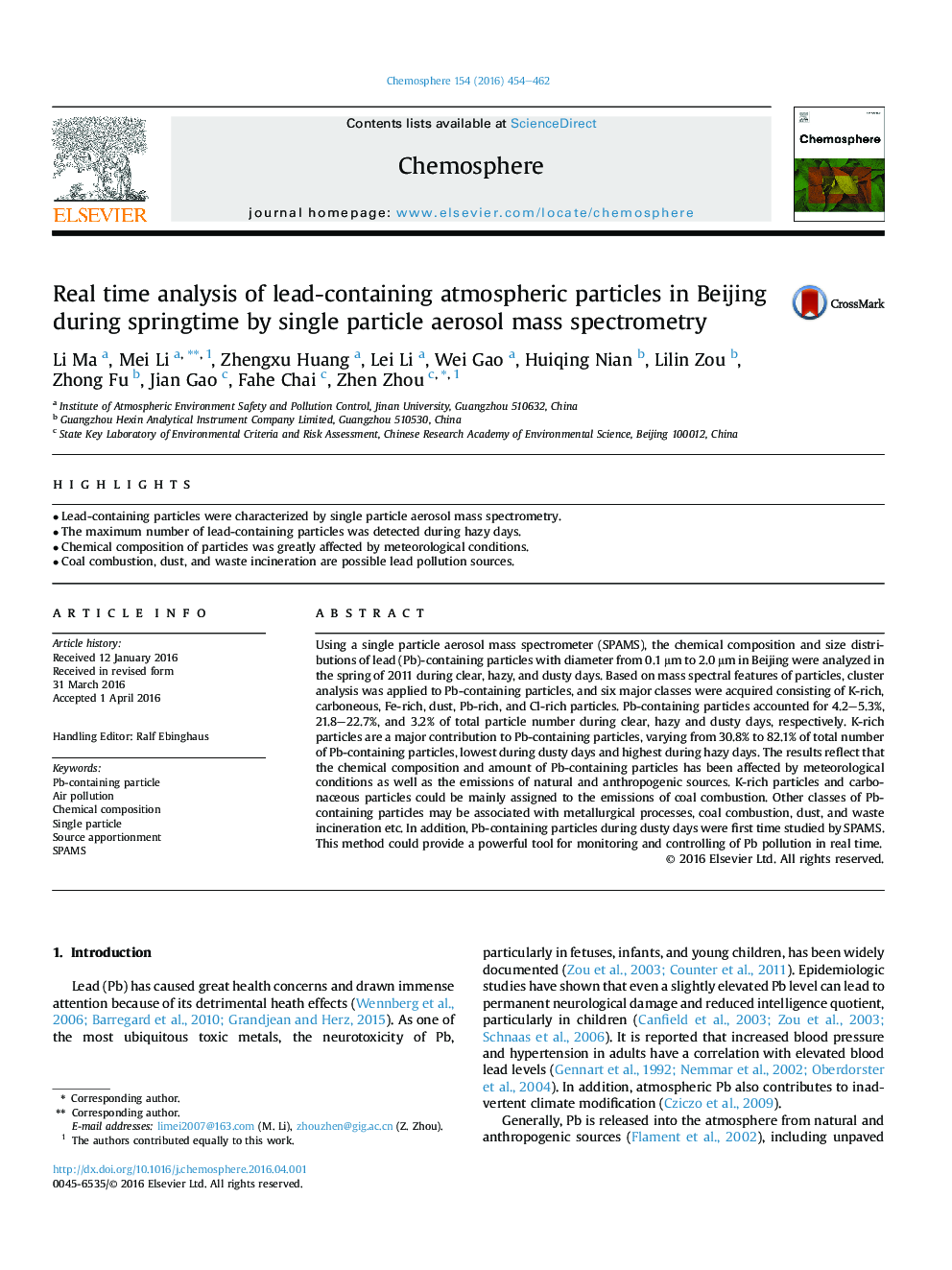| Article ID | Journal | Published Year | Pages | File Type |
|---|---|---|---|---|
| 6306642 | Chemosphere | 2016 | 9 Pages |
Abstract
Using a single particle aerosol mass spectrometer (SPAMS), the chemical composition and size distributions of lead (Pb)-containing particles with diameter from 0.1 μm to 2.0 μm in Beijing were analyzed in the spring of 2011 during clear, hazy, and dusty days. Based on mass spectral features of particles, cluster analysis was applied to Pb-containing particles, and six major classes were acquired consisting of K-rich, carboneous, Fe-rich, dust, Pb-rich, and Cl-rich particles. Pb-containing particles accounted for 4.2-5.3%, 21.8-22.7%, and 3.2% of total particle number during clear, hazy and dusty days, respectively. K-rich particles are a major contribution to Pb-containing particles, varying from 30.8% to 82.1% of total number of Pb-containing particles, lowest during dusty days and highest during hazy days. The results reflect that the chemical composition and amount of Pb-containing particles has been affected by meteorological conditions as well as the emissions of natural and anthropogenic sources. K-rich particles and carbonaceous particles could be mainly assigned to the emissions of coal combustion. Other classes of Pb-containing particles may be associated with metallurgical processes, coal combustion, dust, and waste incineration etc. In addition, Pb-containing particles during dusty days were first time studied by SPAMS. This method could provide a powerful tool for monitoring and controlling of Pb pollution in real time.
Related Topics
Life Sciences
Environmental Science
Environmental Chemistry
Authors
Li Ma, Mei Li, Zhengxu Huang, Lei Li, Wei Gao, Huiqing Nian, Lilin Zou, Zhong Fu, Jian Gao, Fahe Chai, Zhen Zhou,
